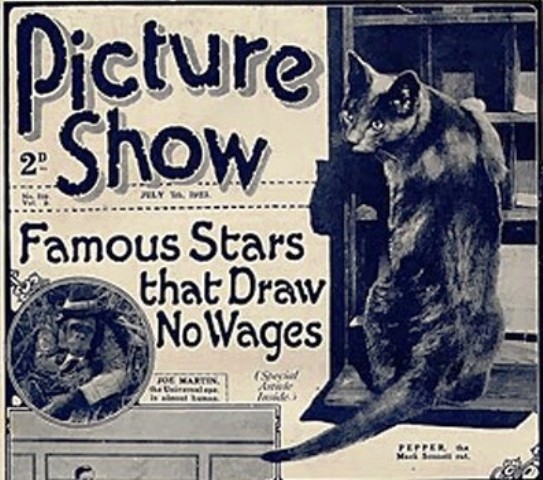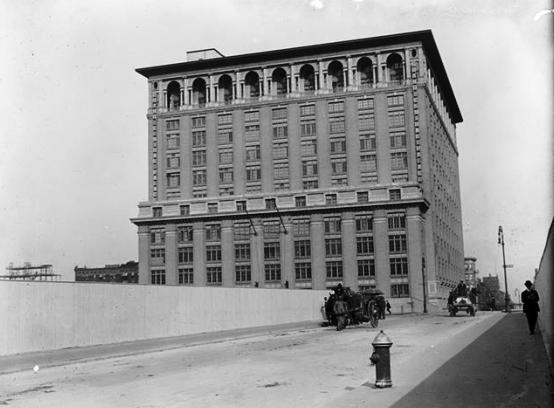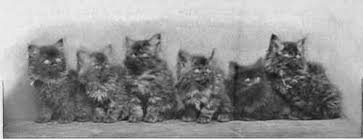
A century before there was Grumpy Cat, Lil Bub, Street Cat Bob, and all the countless felines inducted into the Internet Hall of Fame, there were the “movie cats” that rose to stardom during the silent film era.
I’m not talking about Felix the Cat, the cartoon cat that made his first appearance in 1919 in a short silent film called Feline Follies.
Nor am I referring to Krazy Cat, another cartoon cat that first appeared in 1913 in the New York Evening Journal and later in several short silent films produced by William Randolph Hearst and others beginning in 1916.
The “movie cats” of the early twentieth century were ordinary cats that had a knack for performing with minimal or no theatrical training. They usually made only cameo walk-on appearances, but still, they shared the screen with silent film stars like Charlie Chaplin, Greta Garbo, Douglas Fairbanks, Mary Pickford, Lillian Gish, and Rudolph Valentino.
A few of these cats, like the famous Pepper of Keystone Studios, appeared in close to 17 credited movie roles. Many other feline stars never received screen credit, although a few did earn wages for their owners.

Two movie cats that were certainly entitled to a Screen Actors Guild (SAG) card were Queen Hatto and Baby Silverette of Richmond Hill, Queens. The two silver tabbies were the pride of Miss Elizabeth Kingston, who ran a cattery called “Kingston Kattery” at 1812 Lambert Street (now 122nd St.) She rented the cats to film studios whenever they needed a cat to play a prominent or important part in the movie.
As the New York Sun reported in 1916:
“These cats have been in more motion picture shows than most of the actors, and their acting reaps a nice harvest for their owner. They don’t get rattled when the camera man begins to grind, and seem to enjoy posing.” According to Miss Kingston, her tabbies “registered very well” (showed well on the screen), the photographed beautifully when it came to close-ups, and “they never turn a hair in the most thrilling of scenes and stunts.”
Miss Kingston was no stranger to the stage herself, having served as the financial secretary and then as manager of the Actors’ Child League of New York City. This organization, which was located at 773 East 180th Street in the Bronx (near today’s Mapes ball field and pool), cared for and provided temporary housing for children whose actor parents were away on national tours. Miss Kingston no doubt used this connection to learn about upcoming cat roles in the silent films.
The First Feline of Silent Film
In all fairness, Queen Hatto and Baby Silverette were not the first real cats to appear on film. That honor goes to the “Falling Cat,” which was filmed on one take by Etienne-Jules Marey in 1894 as an experiment to show if cats really do always land on all four feet at the same time. Marey used a chronophotographic gun that was capable of taking 12 consecutive frames a second — and all the frames were recorded on the same picture.
The Movie Cats Go to Grand Central Palace
In December 1916, Miss Kingston’s “movie cats” made their debut at the Empire Cat Club Show at the Grand Central Palace, an exhibition hall on Lexington Avenue at 46th Street. The news that Queen Hatto and Baby Silverette were going to compete at the show caused quite a stir among cat fanciers, as it was feared the screen stars would steal the scene from the more commonplace $400 and $500 prize cats that, up to then, had been the monarchs of the feline society.

Despite all the hullabaloo, it doesn’t appear that the movie cats walked away with any prizes at the show that year. Most of the big prizes went to Mrs. I.J. Ketchen of New Rochelle, who also earned the position of president of the Empire Cat Club that year.
A Catastrophe at the Kattery
In 1919, Miss Kingston purchased a large house and grounds in Brentwood, Long Island, in order to expand her cattery business and increase her feline stock. She ran a standing classified ad in the Brooklyn Daily Eagle, which brought in customers from all over the country.

Tragedy struck the cattery on January 9, 1921, when a careless attendant made an adjustment to an oil stove that caused fumes and smoke. All 24 of her prize-winning Persian cats suffocated and died, including several female cats that were pregnant with kittens already on order for Easter.
Miss Kingston did not let the tragic incident let her down. Sometime that same year, she married Alfred N. List, a jeweler from Manhattan. According to the 1930 Census, the couple resided in an apartment at 143 West 4th Street in Manhattan.




I grew up in Richmond Hill, Queens. Never knew such famous “movie stars” came from my home town. And they sure were cute.
[…] 1916: The Feline Silent Film Stars of Richmond Hill, Queens […]